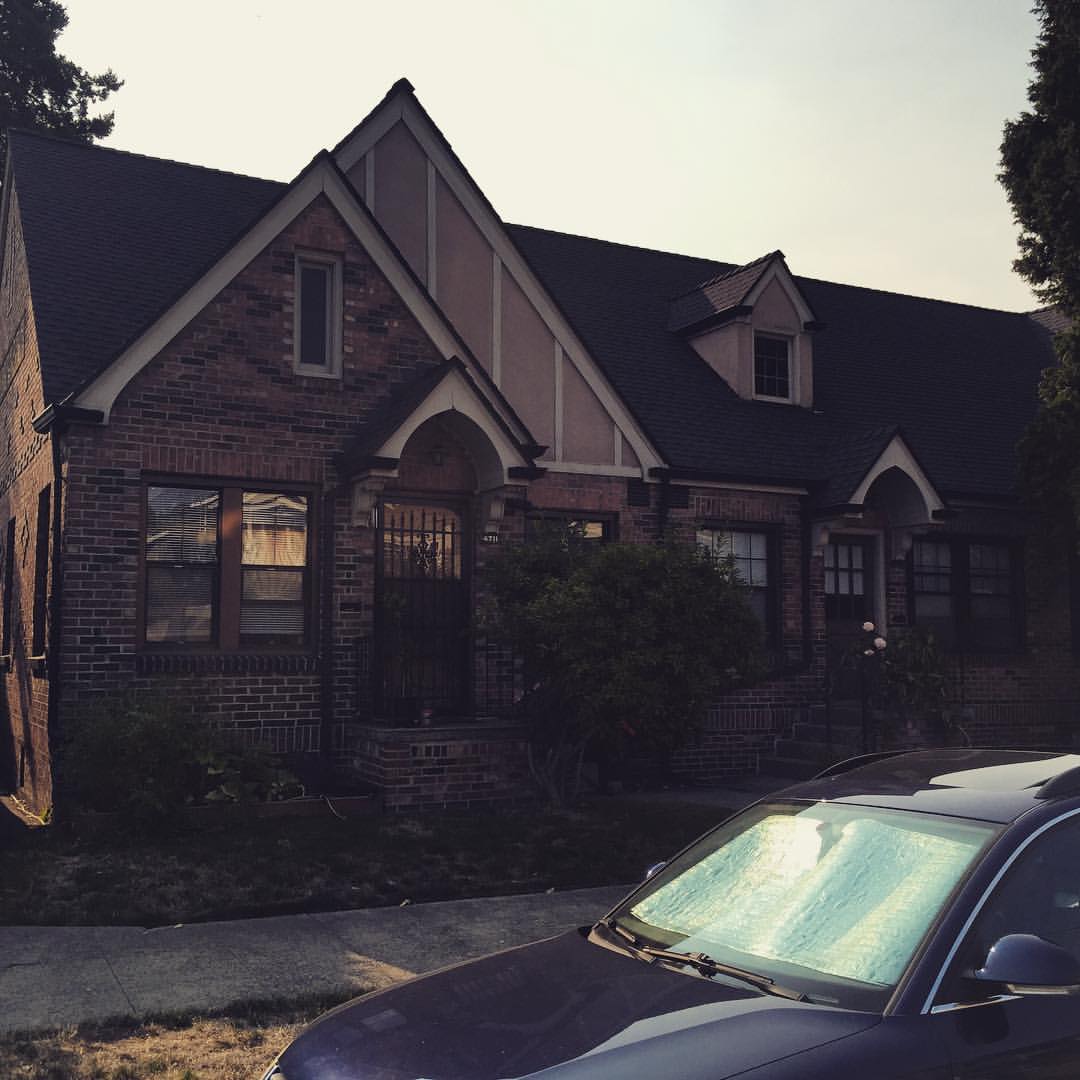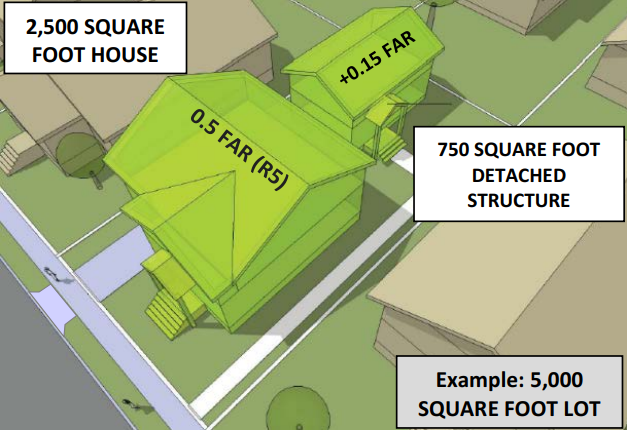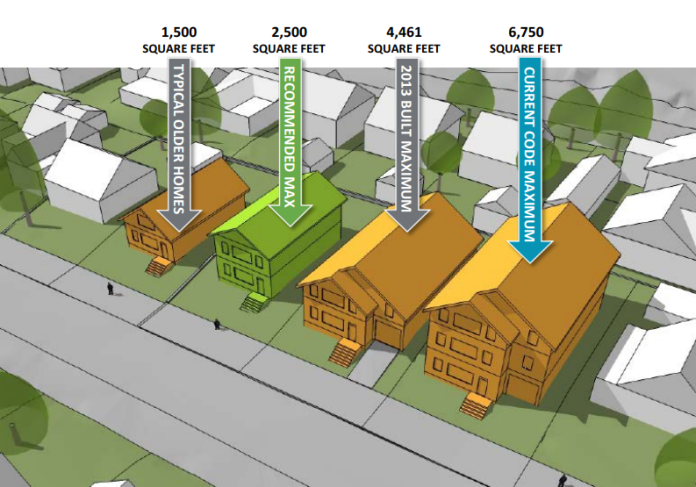Two years ago the Housing Affordability and Livability Agenda (HALA) Advisory Committee tried to put forward the idea of changing Seattle’s rigid single-family residential zones to something more flexible, termed Residential Small Lot (RSL), that would allow duplexes and triplexes on lots where they are currently prohibited. But somebody leaked the HALA draft plan to columnist Danny Westneat and The Seattle Times in the middle of a city council primary election season and that effectively scuttled the possibility of implementing RSL city-wide.
In retrospect, we needed more deft political handling and better framing of the issue. The leak took the chance for a smooth rollout away but city-wide RSL may have still been passable at the time if politicians had stuck their necks out, and I think it’s far from dead. Mayor Ed Murray, in a knee-jerk reaction, walked away from one of the key recommendation his advisory committee was considering delivering after two years of careful deliberation. During that time rental prices have skyrocketed and the housing boom appears to be approaching its peak with no new affordable measures and mandatory inclusionary zoning (MIZ) not yet in place.
Portland, Oregon offers a model for a better policy that is easier for most citizens to get behind. Portland not only legalized duplexes and corner-lot triplexes but also banned McMansions, which is a catchphrase for huge new luxury freestanding homes. Portland still has to go through public input phase and finalize the changes, but in December the Portland City Council did vote to limit single-family homes to 2,000 square feet on 5,000 square foot lots as part of its Residential Infill Project. Pairing the legalization of duplexes and rowhouses with a ban on McMansions makes all the more plain the intent of the law: to encourage more modest housing that moderate-income people can afford. McMansions make an easy target, and rightfully so, since in built-out cities they often cause the 1:1 demolition of middle class homes for millionaire housing.

Critics argue triplexes and rowhouses are too expensive–sometimes going for $600,000 or $700,000–and thus are not alleviating the affordability crisis. Now this overlooks just how expensive the single-family homes the rowhouses often replace have become. In my neighborhood, a well maintained single-family home often sells for more than a million dollars. It also cherrypicks numbers from some of the most in-demand neighborhoods. The benefits of taking triplexes and rowhouses city-wide is that it’d offer new opportunities in a variety of markets. An 800-square foot rowhouse in Wallingford might be worth $700,000–at least until that market is saturated–but in Lake City and Judkins Park a $400,000 rowhouse might be buildable immediately. Now this isn’t affordable in the sense of a low-income solution (without major subsidy) but it does put homeownership and more measures rents within the grasp of middle-income people at a time when more and more that’s not the case. Finally, refusing to build middle income housing will lead to those households outbidding low-income folks for what little affordable housing remains.

Rowhouses have a long history in Seattle, back to its original days. Here Paul Dorpat lays out some examples that show that unbending single-family residential zones are actually outside the norm for Seattle. Portland’s Resident Infill Project has focused on duplexes and triplexes, but in some cases longer rowhouses could also be quite compatible with single-family homes. In many neighborhoods, examples already exist dating back to before more restrictive zoning was imposed. Wallingford has such examples like this four-unit rowhouse. Rowhouses have made a slight comeback, too, in low-rise residnetial zones, which are mostly in urban villages. Outside of urban villages, the dominant construction pattern has been enlarging single-family homes to McMansion status.

A McMansion ban works by putting a maximum square foot limit on a dwelling unit, placing a disincentive on 1:1 demolitions. Rather than tearing down older 1,500-square foot homes to build mansions two or three times as big, we’ll either keep the more affordable older stock, perhaps remodeling it modestly, or replace it with triplexes that each provide moderately priced housing for three households rather than exorbitant housing for one.
The bizarre thing about housing in America is that for the past four decades the average household size has shrunk significantly while the size of the average single-family house in major metropolitan areas has climbed from about 1,700 square feet to about 2,500 square feet. In effect, the homebuilding industry has excluded lower-income people with its ever-larger designs, which they cannot afford. Often, single-family residential zoning has privileged mansion building, renewing single-family residential zoning’s exclusionary effect beyond its historical origins, and that zoning comprises a majority of Seattle land. A McMansion ban addresses that trend of supersizing homes while allowing modest, unobtrusive, and organic housing growth within mostly single-family residential neighborhoods. Seattle would be wise to follow Portland’s lead and limit new single-family home construction to 2,000 square feet while legalizing duplexes and triplexes across the city. We could even permit rowhouses in some cases to take the law further.
Doug Trumm is publisher of The Urbanist. An Urbanist writer since 2015, he dreams of pedestrian streets, bus lanes, and a mass-timber building spree to end our housing crisis. He graduated from the Evans School of Public Policy and Governance at the University of Washington in 2019. He lives in Seattle's Fremont neighborhood and loves to explore the city by foot and by bike.


